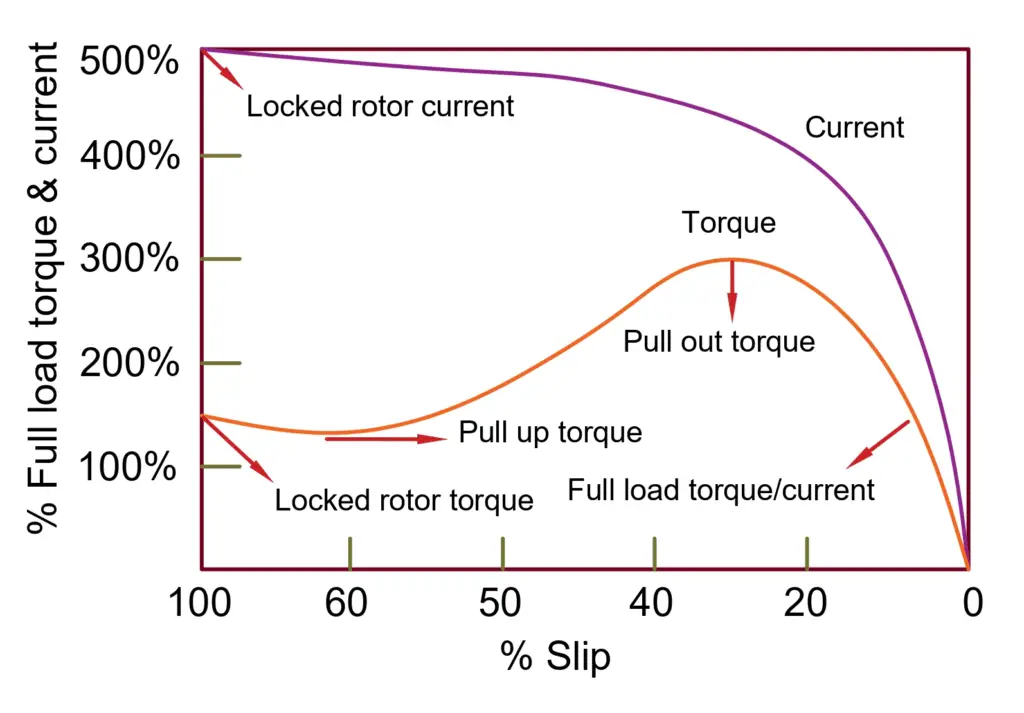This article describes the difference between the locked rotor current and starting current of a motor. An induction motor takes about 5 to 7 times the current of its rated full load current when it is started. When the motor is at rest, the maximum emf is induced in the rotor winding and the rotor draws a large current. The motor current gradually reduces with the acceleration of the motor. The rotor-induced voltage is reduced to a minimum after the motor attains the full rated speed.
The current drawn by the motor starting from its rest position is called the starting current. The current drawn by the motor accelerating from the rest position when rated voltage is applied to the stator is called the locked rotor current. Therefore, in some situations, the starting current and locked current are the same. However, it is not essential every time the starting current locked current is the same. Let us discuss how the locked current and starting current are related.
The induction motor is started by a motor starter. The widely used starters are a direct online starter and a star delta starter. In the DOL starter, rated voltage is applied to the stator when the motor accelerates from its rest position. Yes, in this case, we can say the starting current and the locked current are the same because it is fulfilling the following conditions.
- The motor is at rest
- The rated voltage applied to the stator
Now, take the case of the star delta starter. The motor is started in star when motor is at its rest position and after accelerating to some speed the motor winding is automatically connected in the delta configuration to accelerate the motor to its rated speed. As you know the voltage in the star configuration is 58.7 % of the line voltage.
Therefore, the starting current is low compared to when the motor is run in star. Can we say the starting current in the star is equal to the locked rotor current? absolutely NO. Here, we are not applying a full-rated motor voltage to the stator. Therefore, the starting current is much less than the locked rotor current.

When a motor is running at its rated speed and driving mechanical equipment. The load on the motor can suddenly increase to the extent that the motor is no longer capable of running the load. In the following conditions, the motor may come to stall if ;
- Jamming
- Bearing cease
- Sudden increase of load due to process variation
In these conditions, the motor tries to maintain its torque equilibrium with the load torque by drawing additional current from the source, and thus, the stator current increases. If the motor can not drive the equipment, it will come to a stall. The current drawn by the motor in this condition is called a locked rotor current. Thus, the motor can draw a locked rotor current intermittently after running from rest to full speed if the condition of jamming happens.